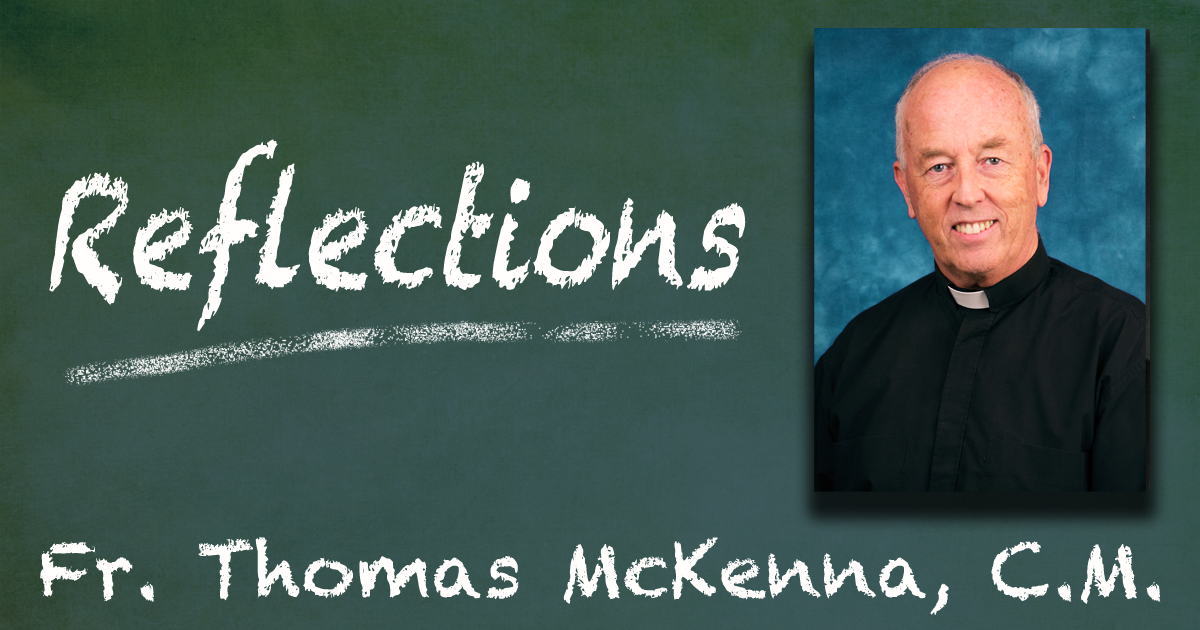
Vincent’s Praying-Acting Cycle
Years ago I heard Fr. Robert Maloney say something about St. Vincent de Paul I never forgot. “Hardly have I ever read somebody who could come down on one side of an issue and then 50 pages later say something the exact opposite.” And isn’t it true. Vincent’s counsels to simplicity, and then to shrewdness. His insistence on mortification, and then on self-care. His advice to be gentle, and then his words to St. Louise to put some vinegar into her dealings with others. And the one I like best. On the one hand Vincent has harsh things to say to those who don’t think hard work is essential for a missioner. But then there’s his letter in which he stoutly affirms that one of the priests who’s been sick and infirm at St. Lazare for decades, “does more for the mission than all the rest of us combined!”
And yet somehow Vincent pulls it off. Not self-contradictory, he makes so much practical sense in the end. (Just don’t pick him up on the wrong day!) He’s a master at holding seemingly opposite things together, especially in the spiritual life. Not an either/or person, he’s a both/and. And he doesn’t do it so much by keeping a balance between two seeming opposites as by holding them in tension, each tugging at the other, each circulating back into its contrary, each pulling its opposite number back on vertical.
Matthew 25, a favorite Vincentian text, highlights one side of a well-known tension in the spiritual life, that between doing and being, action and contemplation. Jesus’ “Whatever you do to the least ones, you do unto me” weights the doing end of the spectrum. Anyone looking in would observe how our Family genes incline us more toward this side of the tension: action, deeds of peace and justice. “What are we to do?” has been named as The Vincentian question
We know well the kinds of things that can happen when this pole predominates — activism, the inability to serve when what’s needed to serve best is to do nothing. And we could also list the devils on the contemplation end. In one of Vincent’s more stinging conferences, he tells his priests, “If anyone thinks he came here to say Mass and to pray only and not to serve the corporal needs of the poor, he came to the wrong place!”
The point is not to lay out the structures of how Vincent manages to hold this antithesis together but rather simply to say he does. Reading him and watching the people who followed him discloses his knack for grasping both sides, tilting one way and then the other but always coming back on center.
Grounding his praying and his acting is his listening, ears and heart ever open to the Spirit. Fr. Hugh O’Donnell locates Vincent’s key gift in his ability to read events. That is from this graced stance, sensing the concrete particulars of how the Spirit was calling to him to bring Good News to the poor. His contemplation flowed into his decisions and the results of these provided the grist for more of his actions, and on and on.
In the end this is an art, developed by the artists and the performers the contemplative activists and the active contemplatives. It’s mostly learned in the school of who does it well. As with any mentors, we try to stand up close to them to see how they do it, to watch how they move hoping that some of that art will rub off.
That’s where many of us can give our personal testimony to seeing this carried off and held together. And that is from watching different individuals and groups in the wider Family. I cite in particular the Daughters of Charity who for generations have swam along in this changing stream of contemplating and acting, and then acting and contemplating, and then…
Contemplation-action, action-contemplation, cycling through, round and round. It’s a performance art Vincentians have seen executed for generations and which today we strive to keep on performing ourselves. Praying and doing intertwined, deep meditation and bold action on behalf of God’s poor – all held together in that fertile tension which will hopefully continue to “bring things about on earth as they are in heaven.”
May the Good Samaritan and his saving deeds come to hold hands with Mary and her attentiveness at the feet of The Lord – and have their rich blend mark the service given by all Vincentian women and men.





0 Comments